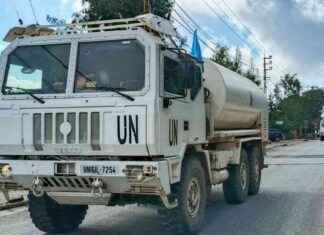The images are currently ubiquitous – and disturbing: A huge patch of white foam looms in the southern Baltic Sea, caused by bubbling gas escaping from pipelines on the seabed. A total of four leaks have been discovered on the Nord Stream 1 and 2 pipelines since Monday. They are all in international waters; two near Sweden, two near Denmark.
The governments of both countries are convinced that the damage is due to sabotage. An obvious assumption shared by many experts: Before the gas leaks were discovered, measuring stations in several countries registered two explosions. Although neither of the two pipelines was in operation; however, both were filled with gas. The alleged act of sabotage could therefore not only have far-reaching political and economic consequences, but also significant environmental effects.
But to what extent do the leaking pipelines actually affect the maritime ecosystem and the climate? The answer to this question depends on several factors: what gas it is, how much of it is escaping – and how it spreads in the water and in the air.
The natural gas that causes the strong bubbling in the images consists mainly of methane. This is a highly flammable and climate-damaging gas – over a 20-year period, it is a good 80 times more potent than carbon dioxide (CO₂). Although methane emissions account for only about 3 percent of man-made greenhouse gas emissions, they are responsible for 0.5 degrees of the past average global warming of about 1.1 degrees. “The extent to which the gas that is now escaping from the pipelines damages the environment is related to how high its methane content is,” says climate researcher Christian Scharun from the Karlsruhe Institute of Technology. “The concentration can vary from 75 to almost 99 percent.”
However, experts from various fields assume that the ecological damage in the sea will remain local. Ulrich Claussen from the Federal Environment Agency also confirms that the greatest damage to the marine ecosystem is likely to have come from the explosions during the alleged sabotage: for example, marine mammals that were on site could possibly suffer from hearing impairment or even loss of hearing. In addition, methane changes the density of water. Ships that need buoyancy per se could sink, says Claussen. For this reason, too, the area is now largely closed. In addition, methane also forms an explosive mixture with air. It can easily be ignited by sparks from engines or cigarettes.
What is more alarming is the sheer volume of gas now escaping into the atmosphere. “If the methane gets into the air, as can be seen in the pictures, it can be transported far,” says climate researcher Scharun. And it will remain in the atmosphere for a very long time: eight to twelve years will pass before it is broken down again – and that in turn, explains Scharun, has a global impact on the climate.
“We know from studies of methane leaks in the North Sea that around 50 percent of the escaping gas rises into the air. A further 30 percent drift there with the current and are then released into the air with a delay, while the remainder is absorbed by methane-eating bacteria,” explains Ulrich Claussen, head of the Marine Protection department at the Federal Environment Agency (UBA) in Dessau-Roßlau. “At the moment, however, we cannot assess whether these assumptions can be transferred to the leaks in the pipelines,” he adds.
Experts at the UBA have also tried to estimate how much gas is flowing out of the pipelines. “We assumed that Nord Stream 1 and 2 are about 1,250 kilometers long and each of these lines consists of two strands,” says Christian Böttcher, area manager, expert on fugitive emissions in the Emission Situation department: With a diameter of 1.1 to 1 .2 meters and a pressure of 100 bar, he calculates, that corresponds to 100,000 tons of methane per line – “and that times three, because three lines were hit.”
In order to be able to compare greenhouse gases better, scientists convert the various substances into so-called CO₂ equivalents. For this purpose, the climate impact of the individual greenhouse gases over a period of 100 years is compared with that of carbon dioxide. The value for the methane escaping from the pipelines is 25, and the scientists at the UBA used this to calculate 7.5 million tonnes of CO₂ equivalents that are released into the atmosphere. According to UBA, this amount corresponds to about one percent of the total German greenhouse gas emissions in a year.
A fourth leak has been discovered on the Nord Stream pipelines in the Baltic Sea. “There are two leaks on Swedish territory and two on Danish territory,” says a Swedish Coast Guard official
Even international experts see no reason for alarmism. They believe that the global impact of the leaks on the climate remains limited. “The Nord Stream 2 leak is truly terrifying and an environmental crime if it was intentional,” says Professor Jeffrey Kargel of the Planetary Research Institute in Tucson, Arizona. However, he does not see a “climate disaster”. Professor Dave Reay from the Edinburgh Climate Change Institute in Scotland makes a similar statement. While an additional amount of the potent greenhouse gas methane is added to the atmosphere, “this is a small bubble in the ocean compared to the vast amounts of so-called volatile methane that are released every day around the world from things like fracking, coal mining and oil exploration.” will.”
In any case, hidden gas leaks are a known problem – even without alleged sabotage. Just recently, a study in the journal Science came to the conclusion that much more methane is released into the atmosphere during oil production than previously thought. During the production process, natural gas also comes to the surface, which is often deliberately burned off – experts speak of “flaring”. According to the energy industry, almost all of the methane it contains is burned and converted into carbon dioxide (CO₂). According to the study, however, it is only 91 percent – the rest of the methane escapes into the atmosphere. This is five times more than assumed and has not yet been recorded, write the authors led by Genevieve Plant from the University of Michigan in Ann Arbor.
“The International Energy Agency has already reduced the efficiency of methane combustion during flaring to 92 percent when calculating its emission inventories,” says Martin Heimann, former director at the Max Planck Institute for Biogeochemistry. The climate researcher Scharun explains that these emissions are not reported by the Federal Environment Agency or the international agencies. “They don’t have that on their screens,” he says. Which is also related to the fact that the mineral oil companies have no interest in showing a bad ecological balance.
“Aha! Ten minutes of everyday knowledge” is WELT’s knowledge podcast. Every Tuesday and Thursday we answer everyday questions from the field of science. Subscribe to the podcast on Spotify, Apple Podcasts, Deezer, Amazon Music, among others, or directly via RSS feed.








